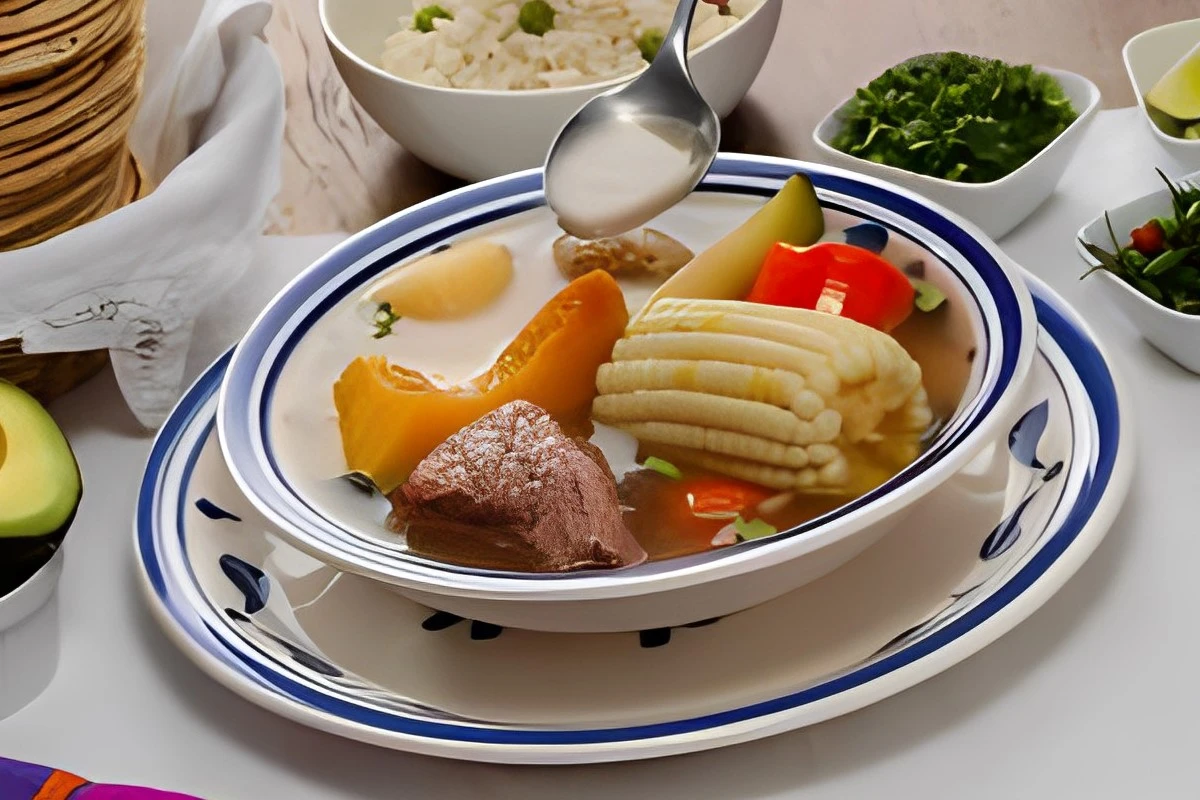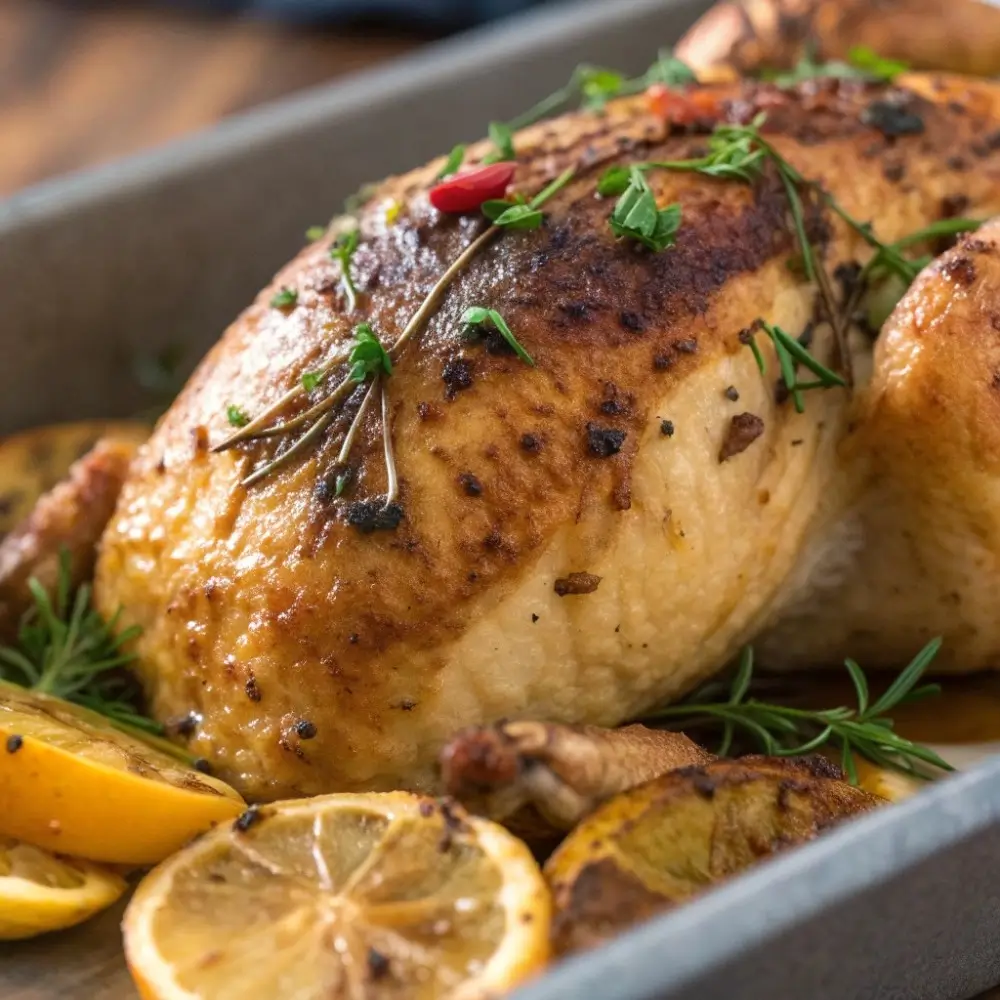Table of Contents
Embarking on a culinary journey through Mexican cuisine, we explore Caldo de Res, a traditional beef soup cherished for its rich flavors and comforting warmth. From bustling markets to cozy kitchens worldwide, it’s a testament to Mexican cooking’s simplicity and depth. In this guide, we’ll uncover meat types that elevate this soup, guided by insights from Reddit’s cooking communities. Join us as we navigate meat cuts’ nuances, their impact on flavor and texture, and choosing the best for your next pot of Caldo de Res.
Traditional Meat Cuts for Caldo de Res
At the heart of every authentic Caldo de Res is the meat, defining the soup’s character and depth. The traditional choice, beef shank, is revered for its rich texture and marrow-filled bones that infuse the broth with unparalleled flavor.
Overview of Common Cuts
- Beef Shank: The quintessential meat for Caldo de Res, beef shank combines lean muscle with bone and marrow, offering a symphony of flavors and textures that are slowly released into the broth during cooking.
Benefits of Bone-In Cuts
- Marrow and Richness: Bone-in cuts like the shank and oxtail enhance the soup’s flavor and enrich the broth with nutrients, creating a hearty meal.
Choosing the right meat is crucial for authentic Caldo de Res. The beef shank, with its balance of meat, bone, and marrow, is a traditional favorite, reflecting Mexico’s culinary heritage. We’ll explore alternative cuts and preparation tips to adapt this classic soup to modern tastes and dietary needs, ensuring Caldo de Res remains a comforting favorite worldwide.
Alternative Meat for Caldo de Res
Exploring the culinary depths of Caldo de Res, the Reddit community offers a treasure trove of advice on alternative meat cuts that can elevate this traditional dish. Let’s dive into some of these recommendations and see how they might provide a different twist on the classic recipe.
Beef Chuck and Ribs
- Beef Chuck: Praised for its rich flavor and tenderness, beef chuck emerges as a popular alternative among Reddit users. Its marbling and fat content contribute to a broth that’s both flavorful and satisfying, making it a worthy contender for those unable to find beef shank.
- Ribs: Beef ribs add a depth of flavor to the broth that’s hard to beat. The meat falls off the bone after slow cooking, offering a tender bite that complements the hearty vegetables in Caldo de Res.
Stew Meat Considerations
- While convenient, pre-packaged stew meat can be a mix of various cuts, leading to inconsistent textures and flavors. Reddit chefs suggest opting for a specific cut and chopping it yourself to ensure uniformity and quality in your Caldo de Res.
Non-Traditional Options
- Beef Neck: For those looking to experiment, the beef neck is a cut that offers both flavor and gelatinous texture, enriching the broth as it cooks slowly. It’s a less common choice that can surprise and delight with its contribution to the dish.
- Oxtail: Another luxurious option, oxtail provides a rich, gelatinous quality to the broth, enhancing the overall mouthfeel and flavor profile of the Caldo de Res. Its unique taste and texture make it a favorite among culinary adventurers on Reddit.
Exploring alternative cuts diversifies flavors and textures in Caldo de Res, showcasing its adaptability. Whether traditional beef shank or options like chuck or ribs, each brings unique qualities. Embrace experimentation to find the cut that suits your preferences, ensuring a satisfying, authentic experience.
Enhancing Caldo de Res with the Right Meat Cut
Selecting the ideal meat cut is pivotal in elevating Caldo de Res from a simple soup to a rich, comforting experience. The choice of meat influences the broth’s depth, the tenderness of the chunks, and the overall nutritional profile.
Importance of Marbling and Fat
- Marbling: Fat marbling within the meat contributes significantly to the flavor and tenderness of Caldo de Res. Marbled cuts, when cooked slowly, release fat gradually, enriching the broth with a complex taste and silky texture.
- Fat Content: While fat enhances flavor, excessive amounts can overwhelm the dish. Opt for cuts with a moderate fat content and consider skimming excess fat off the broth as it cools to strike the perfect balance.
Cooking Techniques for Tender Meat
- Slow Cooking: Tougher cuts, rich in connective tissues like collagen, transform into tender, flavorful bites through slow cooking. This method breaks down the fibers, melding them into the broth and enhancing the soup’s body.
- Pressure Cooking: For those pressed for time, pressure cooking can tenderize meat quickly without sacrificing flavor. It’s an efficient way to achieve the slow-cooked tenderness characteristic of traditional Caldo de Res.
Choosing the Right Cut
- Beef Shank: The traditional star of Caldo de Res, beef shank offers a balance of meat, bone, and marrow. Its slow cooking yields a broth enriched with gelatin, minerals, and a deep, meaty flavor.
- Chuck Roast: An accessible alternative, chuck roast provides similar benefits to the shank, with ample connective tissue that dissolves into the broth, adding richness and body.
- Oxtail and Beef Ribs: These cuts add a gelatinous quality to the broth, enhancing its texture and flavor. These cuts, while more expensive, offer a decadent version of the classic soup.
Preparing Caldo de Res for Flu Recovery
When flu season strikes, a bowl of Caldo de Res can be more than just a meal; it becomes a soothing remedy. Preparing this traditional soup with flu recovery in mind involves selecting ingredients that not only comfort but also heal.
Healthy Cooking Tips
- Lean Beef: Choosing lean cuts of beef minimizes saturated fats without sacrificing the proteins needed for healing. Lean protein supports the immune system and aids in the body’s recovery process.
- Low-Sodium Broth: High sodium intake can lead to dehydration, especially when battling the flu. Opt for a low-sodium broth or make your own to keep the soup hydrating and heart-healthy.
- Skim the Fat: After cooking, allow the soup to cool slightly and skim off any fat that has risen to the top. This step ensures a lighter, healthier broth that’s easier on the stomach.
Immune-Boosting Ingredients:
- Garlic and Ginger: Add these to enhance flu-fighting capabilities and add warmth to the flavor.
- Leafy Greens: Spinach, kale, or Swiss chard provide vitamins A and C for immune defense.
- Citrus Juice: A squeeze of lime or lemon adds vitamin C, aiding in iron absorption.
Enhancing Digestibility:
- Cook Vegetables Thoroughly: Soft, well-cooked vegetables are easier to digest, ideal for sensitive stomachs during the flu.
- Serve Warm: Enjoying the soup warm (not hot) soothes a sore throat and makes swallowing easier, providing instant comfort.
Customizing for Dietary Needs
- Vegetarian Options: For a vegetarian or vegan version, replace beef with beans, lentils, or tofu, and use vegetable broth. These substitutions maintain the soup’s nutritional benefits while aligning with plant-based dietary preferences.
Customizing Caldo de Res with these considerations creates a therapeutic experience. The balance of lean protein, low sodium, and immune-boosting ingredients makes it ideal for flu recovery, offering comfort, nutrition, and healing.
FAQs
In this section, we address some frequently asked questions about incorporating Caldo de Res into a flu recovery diet, providing insights into how this traditional dish can support health and wellness during the flu season.
Is Caldo de Res high in sodium?
Caldo de Res can vary in sodium content based on how it’s prepared. Traditionally, it might be higher in sodium due to the use of seasoned broth. However, opting for low-sodium broth and seasoning with natural herbs can significantly reduce its sodium content, making it a healthier choice during flu recovery.
Can I eat Caldo de Res on a low-carb diet?
Yes, Caldo de Res can be adapted for a low-carb diet by minimizing starchy vegetables like potatoes and focusing on adding more non-starchy vegetables such as zucchini, green beans, and leafy greens. This adjustment maintains the soup’s nutritional integrity while fitting into a low-carb eating plan.
Is Caldo de Res high in cholesterol?
The cholesterol content in Caldo de Res largely depends on the cut of beef used. Leaner cuts such as beef shank, when trimmed of excess fat, can lower the overall cholesterol content. Additionally, skimming off fat from the broth as it cools can further reduce cholesterol levels, making it a heart-healthier option.
Can Caldo de Res help with digestion?
Yes, the fiber from the vegetables in Caldo de Res promotes healthy digestion, which is beneficial, especially when your system may be compromised due to the flu. The broth helps keep you hydrated, aiding in digestion and helping to alleviate some flu symptoms.
Can I make Caldo de Res vegetarian or vegan?
Absolutely. To make a vegetarian or vegan version of Caldo de Res, use vegetable broth instead of beef broth and substitute the beef with plant-based protein sources like tofu, tempeh, or a variety of beans. This version retains the comforting and nutritious qualities of the soup while aligning with vegetarian and vegan dietary preferences.
Is Caldo de Res healthy?
Caldo de Res is a nutritious and comforting option, especially during flu recovery. It’s rich in protein, vitamins, and minerals essential for health. By making mindful choices in the preparation process, such as using lean cuts of meat and low-sodium broth, Caldo de Res can be a healthy addition to any diet, providing warmth and nourishment when you need it most.
Testimonials and Case Studies
In this section, we share real-life stories and experiences from individuals who have turned to Caldo de Res as part of their flu recovery process. These testimonials highlight the soup’s comforting and healing properties, offering personal insights into its effectiveness.
Real-Life Benefits
Ana’s Experience: Ana, a graphic designer from San Diego, remembers her time with Caldo de Res during a severe flu season. “I was down with the flu, feeling miserable and unable to eat much. My mom made me a pot of Caldo de Res, insisting it would help. I was skeptical at first, but the warmth and richness of the soup were incredibly soothing. Not only did it help me stay hydrated, but it also provided me with the nutrients I needed to recover. I truly believe it played a crucial role in my healing process.”
Carlos’ Recovery Journey: Carlos, a teacher from El Paso, shares his story of incorporating Caldo de Res into his flu recovery. “After a few days of battling the flu with little improvement, I tried Caldo de Res, my grandmother’s recommended remedy. The difference it made was night and day. The broth was not only comforting but also helped me regain my strength. The mix of lean protein and vegetables nourished my body, aiding in a quicker recovery than I anticipated.”
Vegetarian Adaptation – Sarah’s Approach: Sarah, a vegetarian from Portland, modified the traditional Caldo de Res recipe to suit her dietary preferences. “I replaced the beef with a mix of beans and added more vegetables. Despite the modifications, the soup retained its comforting essence and helped me through my flu. It’s now my go-to recipe whenever I feel under the weather.”
For more information on the nutritional benefits of the key ingredients used in Caldo de Res, visit Healthline for an in-depth look at the health benefits of beef, and Medical News Today for a comprehensive overview of the benefits of carrots.
Conclusion
The testimonials and case studies reveal the health benefits of Caldo de Res. Ana, Carlos, and Sarah’s experiences show how this dish aids flu recovery, offering comfort, nutrition, and a taste of home. Whether following the traditional recipe or adapting it to personal needs, Caldo de Res is a nourishing option for flu recovery and wholesome meals.





